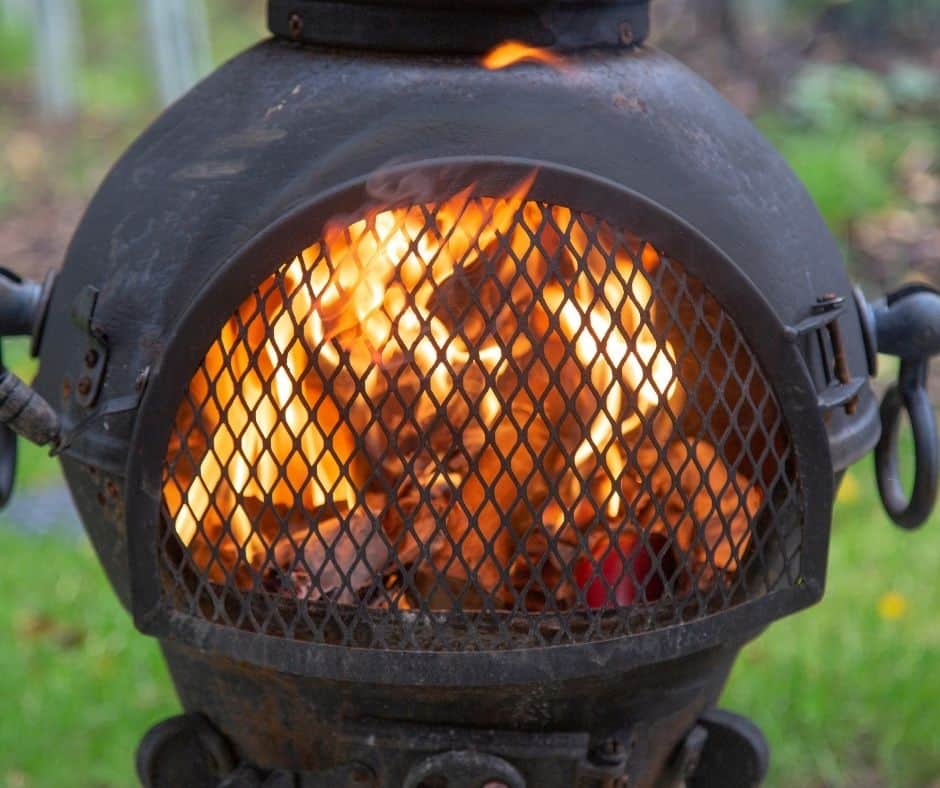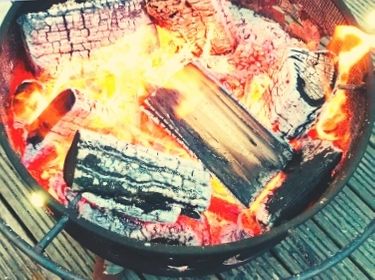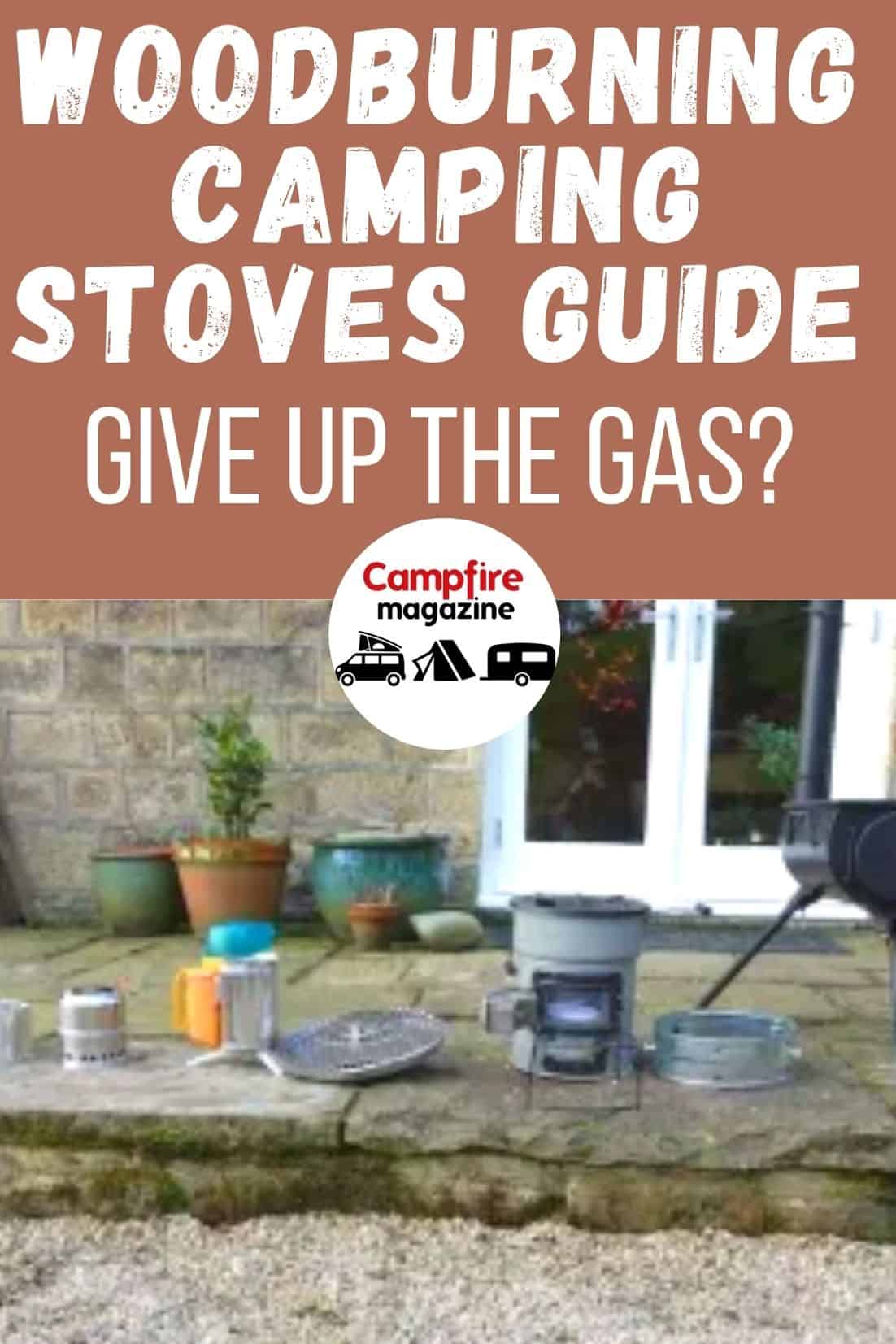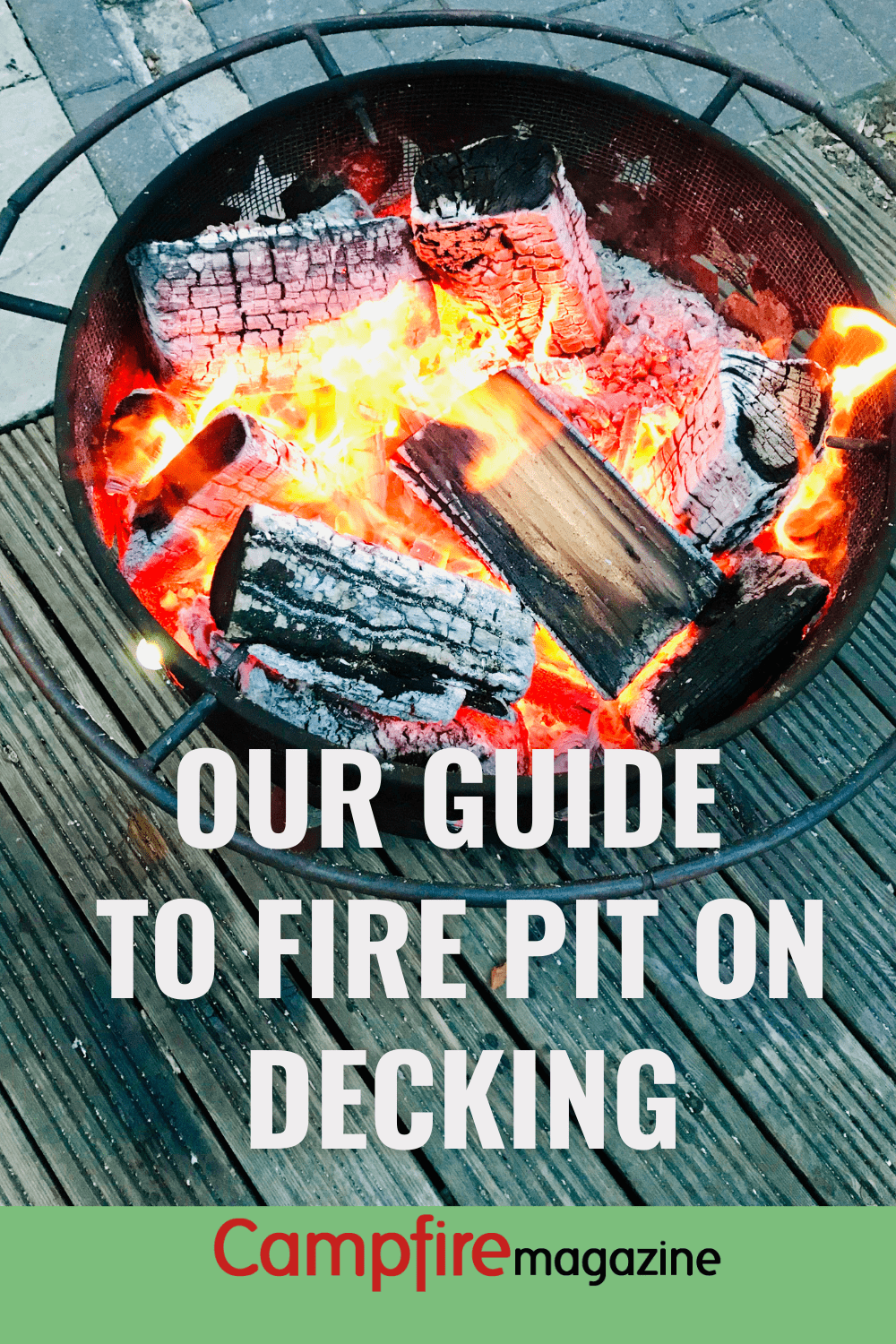Fire pits and chimineas are a popular choice when it comes to accessorising your garden. Not only do they look great, they heat any outdoor area on those long summer nights when the temperature drops.
So which one is the best choice and why? Read on to find out the difference between these two outdoor heaters and the pros and cons of both in which we will come to a solid conclusion and decide which one we think is the best. Let’s get started!

Fire Pit or Chiminea: What’s The Difference?
There are various differences between the two structures such as:
Shape
The most distinguishing feature is the shape of each structure. A fire pit looks like a large bowl that can either be dug into the ground or free-standing. Materials such as wood are placed inside the open fire pit bowl and ignited to create a fire.
A chiminea is a free standing bulbous structure with a chimney on top to extract smoke. A small opening at the front of the chiminea is used to add wood to the fire.
Price
Chimineas are generally pricier than fire pits and range from £150 up to £1000. This is due to their elaborate construction and the materials they are designed with which can be clay, cast iron or aluminium.
Fire pits are cheaper in price and can be purchased for as low as £60, although high end designs are available. These outdoor heaters come in many different designs and you can even make your very own unique fire pit which nobody else will have!
Smoke
“There’s no smoke without fire.”
Smoke can be dangerous if inhaled, particularly black smoke, However, as long as you are careful with what you burn inside a fire pit or a chiminea then smoke may not be an issue.
Generally, a chiminea is the more convenient option when it comes to smoke as it has a chimney which directs the smoke away and up into the sky. A fire pit does not have such a feature and the slightest bit of wind will have users coughing and spluttering which will put a dampener on the moment.
A good tip is to burn the correct fuel such as dry wood. This will limit the amount of smoke making it a more enjoyable (and cough-free) experience.
Fuel Size
If wood is your source of fuel (which it normally is), then a fire pit is able to take bigger pieces due to its open bowl structure. Also, check out our article about starting a fire pit.
A chiminea has a smaller opening which means smaller pieces will be required which can be frustrating if you’re running low on fuel and you need to quickly chop more.
Materials
Most fire pits are made from durable materials such as stone, concrete, cast iron and steel. Steel fire pits are light in weight which makes it easy to move them around the garden.
Chimineas are generally pretty heavy, particularly when made from cast iron. Other materials include clay and terracotta or steel. Clay chimineas are prone to damage, particularly if dropped.
Protective covers can be purchased for both which are recommended for cast iron as it can (and will) rust if left out in cold, rainy conditions.
Using The Product
While both items are generally easy to use, it has to be said that a fire pit wins this battle. A fire pit requires no more than a flame to some kindling and you’re ready for action. We've written an article about cooking on a firepit.
Chimineas, on the other hand, can take a while to get going and need a lot of prompting when trying to hold a flame. They sometimes need a base layer of sand or gravel to help maintain the fire.
Size
Chimineas are often smaller than fire pits which is great if your garden is on the small side but laughable if you have acres of land.
Similarly, small fire pits are available but they do range dramatically in size. Some even being built into garden furniture or firepit tables.
Safety
It goes without saying that being around a fire can never be 100% safe and you should always be alert when dealing with a chiminea or a fire pit.
It could be argued that a chiminea is safer than a fire pit because it is more enclosed. However, the flames of the fire can only be seen from one side, so individuals behind the chiminea may not realise it has been ignited, particularly if there is no visible smoke.
On the other hand, a fire pit can be seen from all angles, so any individual would be aware of the flames from a distance. The only downside is that embers from the fire can blow in all directions if there is a gust of wind. This is not the case with a chiminea as the fire is contained.
Durability
Both items are constructed using materials that can withstand most weather conditions. Clay chimineas may suffer damage such as cracks (if they are pushed over or dropped) but fire pits are long lasting and it is unlikely that you would ever need to replace one. Check out our guide to cast iron chimineas
Cleaning Process
Fire pits are easy to clean out with their large open bowl shape. Scooping out any ash or pieces of wood is fairly simple and there is no need to wash it.
Chimineas can be difficult to clean as you need to get your hands inside the opening to scoop out whatever is in there. Obviously, the bigger the opening, the easier it is to clear out but this may also put a dent in your wallet!

Chiminea Pros and Cons
Pros
They have a chimney to extract smoke from the fire and away from users.
Cast iron chimineas are extremely durable and will never need to be replaced if looked after.
The enclosed design means the fire is well contained should there be any strong winds.
Cons
Chimineas are heavy and are difficult to move around the garden without any help.
They are a safety hazard for young children who may touch the back of the chiminea without realising it is burning.
Cleaning is an issue and can be frustrating if the opening is small.

Fire Pit Pros and Cons
Pros
A 360 degree view of the fire means that people can sit around and enjoy the fire instead of having to squeeze up next to each other to see the flames.
They are easy to clean with their convenient bowl-like design.
A good fire pit doesn’t have to be expensive and free-standing structures are lighter in weight than a chiminea so can easily be moved around.
Cons
The lack of a chimney means that any smoke or embers may get in the way of your evening.
Large fire pits require more wood which can be costly depending on how often it is used.
Creating your own fire pit is a permanent fixture that may become unsightly if you don’t use it often.
Decision time
Fire pits and chimineas are a great addition to any garden and the novelty rarely wears off. They create a great focal point for any garden and who doesn’t love getting wrapped in a blanket to sit around an open fire with their loved ones?
However, we think that the fire pit takes the trophy in this competition. They are cheaper, more durable and their ease of use wins hands down compared to that of a chiminea. Both outdoor heaters have their pros and cons and the decision ultimately lies with yourself.
Off-Ground Campfires
Here’s an idea for avoiding ground scorch under your campfire. This portable mesh campfire keeps the burning logs off the floor and makes it easier to clear up the ash afterwards.
Folds to next-to-nothing and stores away in a neat bag. Lots of brands make the same thing, by the way. We chose the cheapest and fastest delivery option (at the time of writing!)
For inspiration, here are two delicious-sounding campfire tripod recipes to try
Pesto marinated lamb fillet
- Enough lamb fillet for four
- 2 tbsps chopped basil
- 1 clove garlic
- 25g grated parmesan
- 10g pine nuts
- 1 tbsp virgin olive oil
- Salt and pepper
- Blend the basil, the pine nuts, the garlic, the parmesan cheese and the olive oil. Use a mortar and pestle or a small blender.
- Set the grill grid on the tripod at a moderate heat. Fry the lamb fillets on the grid till almost cooked. Spread the pesto over the fillets and cook for a couple of minutes longer. Serve with the ratatouille and some good bread.
Ratatouille
- 1 tbsp olive oil
- 125g chopped onion
- 200g red and green pepper in small pieces
- 250g aubergine in small pieces
- 250g sliced tomatoes
- 250g courgettes in small pieces
- 1 clove garlic, chopped
- 1 tbsp mix of chopped rosemary and thyme
- Salt
- Put the kotlich pot over the fire, hanging on the tripod. Fry the onions lightly in the oil and add the other vegetables.
- Simmer with the lid on until tender. Add the herbs and season to taste.
- Hang the pot up high to keep the ratatouille warm.
- Why not have a go at Trish’s recipes for nettle soup and fish soup?
- And here are more great kotlich campfire recipes sent in by Campfire Magazine readers.






